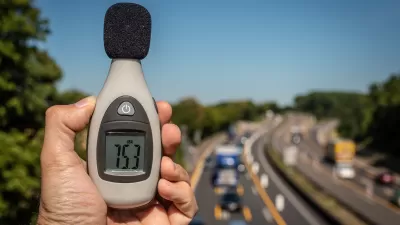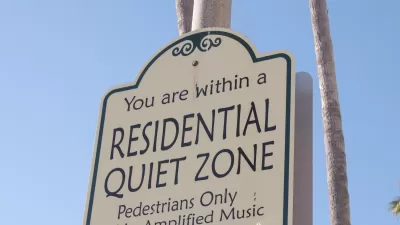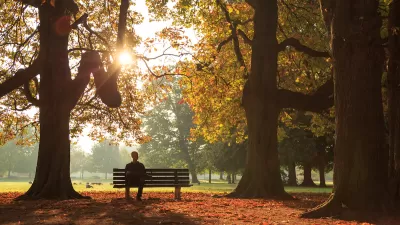Several cities are piloting programs that use machine learning to identify and understand urban noise patterns and enforce noise ordinances.

More cities are taking action to reduce noise pollution and limit vehicle decibel levels, reports Linda Poon, and the process could soon become automated thanks to new sensor technology. A Paris pilot program will install microphones and cameras that can measure decibel levels and help identify the vehicle and driver. "No decibel threshold or fines will be set during the three-month trial period, according to French newspaper Liberation, but it’ll test the potentials and limits of automating the war on sound pollution."
"By now, research has been mounting about the health effects of continuous noise exposure, including links to high blood pressure and heart disease, and to poor mental health." But despite existing noise ordinances, enforcement of vehicle sound limits has been difficult and costly for law enforcement. According to Poon, "Those obstacles have made noise pollution an increasingly popular target for smart city innovation, with companies and researchers looking to make environmental monitoring systems do more than just measure decibel levels."
In New York City, a group of researchers is using machine learning to understand the sources of noise and develop tools that cities and residents can use to get information, understand patterns, and address complaints in excessively noisy areas. With the project already showing promise in Red Hook, where residents were able to use the data to get trucking routes moved away from residential streets, the group hopes to work with the city to implement the project at a larger scale.
FULL STORY: Can Sensor Technology Cut Noise Pollution in Cities?

Study: Maui’s Plan to Convert Vacation Rentals to Long-Term Housing Could Cause Nearly $1 Billion Economic Loss
The plan would reduce visitor accommodation by 25,% resulting in 1,900 jobs lost.

North Texas Transit Leaders Tout Benefits of TOD for Growing Region
At a summit focused on transit-oriented development, policymakers discussed how North Texas’ expanded light rail system can serve as a tool for economic growth.

Using Old Oil and Gas Wells for Green Energy Storage
Penn State researchers have found that repurposing abandoned oil and gas wells for geothermal-assisted compressed-air energy storage can boost efficiency, reduce environmental risks, and support clean energy and job transitions.

Santa Barbara Could Build Housing on County Land
County supervisors moved forward a proposal to build workforce housing on two county-owned parcels.

San Mateo Formally Opposes Freeway Project
The city council will send a letter to Caltrans urging the agency to reconsider a plan to expand the 101 through the city of San Mateo.

A Bronx Community Fights to Have its Voice Heard
After organizing and giving input for decades, the community around the Kingsbridge Armory might actually see it redeveloped — and they want to continue to have a say in how it goes.
Urban Design for Planners 1: Software Tools
This six-course series explores essential urban design concepts using open source software and equips planners with the tools they need to participate fully in the urban design process.
Planning for Universal Design
Learn the tools for implementing Universal Design in planning regulations.
Ascent Environmental
Borough of Carlisle
Institute for Housing and Urban Development Studies (IHS)
City of Grandview
Harvard GSD Executive Education
Toledo-Lucas County Plan Commissions
Salt Lake City
NYU Wagner Graduate School of Public Service





























